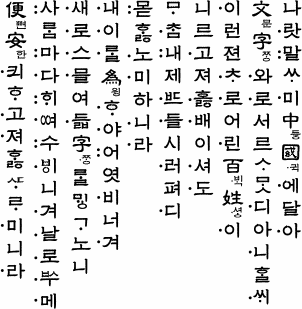Is Korean A Tonal Language? Well... It Used To Be, But..
Korean, the language of North and South Korea is spoken by 77 million people in the world. It’s a language isolate, meaning that it’s considered unrelated to other languages (even though some theorize that languages such as Turkish might be very distantly related to Korean). Despite this fact, Korean has been strongly influenced by it’s neighboring countries for centuries, meaning that the language has a lot in common with such languages as Chinese and Japanese.
But does Korean have tones like Chinese does? The answer is no.
Korean is not a tonal language, but it used to be. Until the early 17th century, tone-marks were common in Hangul, the Korean alphabet, and 3 tones were used in the language. There was a low flat tone, a high flat tone, and a rising tone. A few modern dialects of Korean do, however, use a kind of tones, but the official language isn’t tonal.
What Are Tones In Languages?
Tonal languages are languages where the same syllable or morpheme can have completely different meanings depending on the pitch or tone with which they’re pronounced. There are neutral tones, rising tones, falling tones, rising- then falling tones and a few others, and tones are most common in Asian languages such as Chinese, Thai and Vietnamese.
As an example of this, let’s look at the Chinese morpheme “ma”. “Ma” can mean several completely different things depending on the tone that’s used.
- mā means “mother” (a neutral tone)
- má means “hemp” (a rising tone)
- mǎ means “horse” (a falling, then rising tone)
- mà means “scold” (a falling tone)
To hear an example of the different tones (in Chinese), watch the video below.
Korean Used To Be A Tonal Language
While the Korean language spoken today doesn’t have tones (in its official form), it used to. Until around the 17th century, Korean, or what we call Middle-Korean, had three tones, namely a rising tone, a high flat tone and a low flat tone. The Korean alphabet, known as Hangul was originally developed with this in mind, and it used to feature a system of dots (known as “bangjeoms”, 방점, meaning side-dots) that were written next to any syllable block in order to note which tone was to be used.
In the original form of Hangul (called Hunminjeongeum [훈민정음]) one dot to the left of the syllable block meant that the high tone was to be used, two dots called for the rising tone and no dot meant the flat tone was to be applied.

An example of Korean text written with tonal diacritics.
Tones In Modern Dialects Of Korean
Since the 17th century, tones haven’t been a part of the Korean languages. There are still traces, however. For one thing, the side-dot diacritics are still used in Korean dictionaries, not to indicate tones, but to indicate when a syllable is to be pronounced for longer time. This is marked with the two dots diacritics.
Tones aren’t 100% extinct in Korean, however. Some dialects still use pitch accents in pronouncing words. Pitch accents sound like tones, but the difference between tones and pitch accents is that tones may completely change the meaning of a word, whereas pitch accents mostly just indicate the pitch with which a syllable should be pronounced.
Still, some dialects of the Korean language do have variants of pitch accent that one could consider actual tones. These are found in the South Korean region of Gyongsang and the North Korean region of Hamgyong
In the South Gyongsang dialect, for example a high, middle and low tone can be applied to a word. “Sóni” with the high tone means “guest”, “sōni” with the middle tone means “hand” and “sòni” with a falling tone means “grandchild”.
Conclusion: Korean Isn’t Tonal, But It Used To Be, And It Might Become Tonal Again
While Korean used to be a tonal language centuries back, today it isn’t considered as such. It would seem, however, that the answer to the question of Korean being tonal isn’t black and white. The language used to have tones, and traces of these are left in the modern Korean language to this date. In the same time, some dialects of regional Korean have pitch-accent or even clear tonal features to this day.
Some sources even indicate that spoken Korean may be developing in such a way that tones are beginning to come back and be an important feature of the language again. In Seoul, the local dialect has begun applying tone-like pitches to some words since the 1960’s and it seems as though these are becoming more and more common.
If you’re interested in learning the Korean language, I encourage you to go read my guide on how to learn to speak Korean by yourself.

